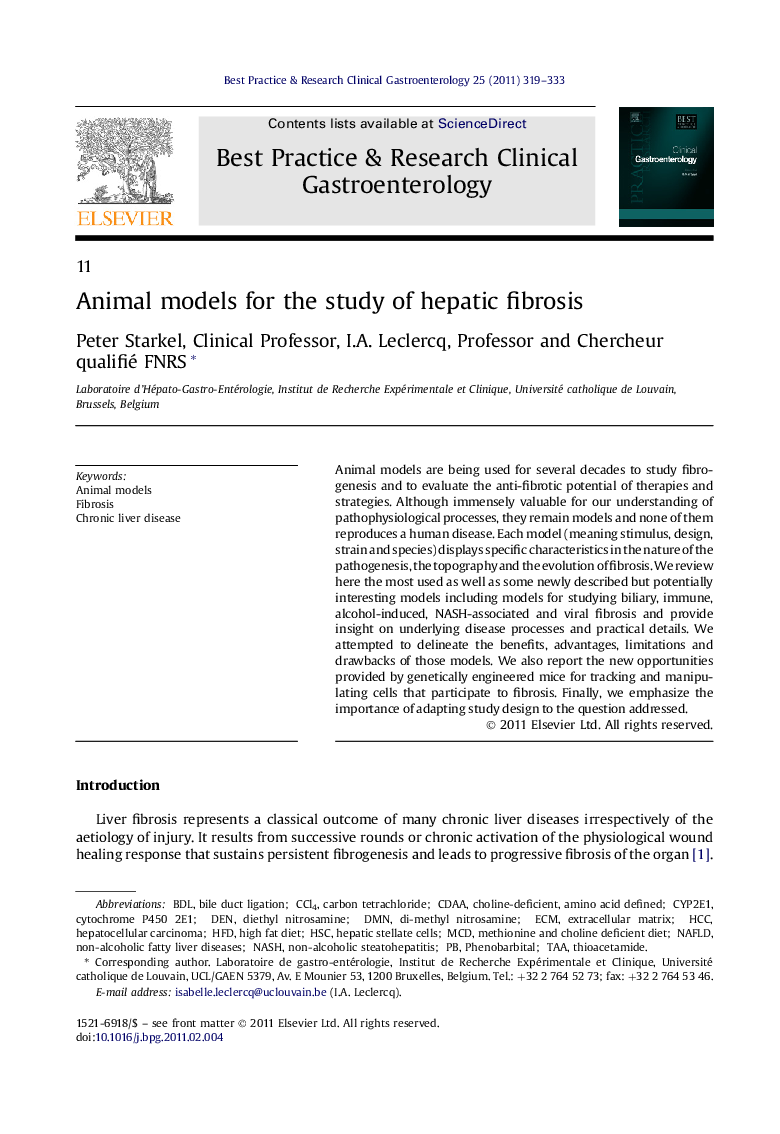| Article ID | Journal | Published Year | Pages | File Type |
|---|---|---|---|---|
| 6086536 | Best Practice & Research Clinical Gastroenterology | 2011 | 15 Pages |
Animal models are being used for several decades to study fibrogenesis and to evaluate the anti-fibrotic potential of therapies and strategies. Although immensely valuable for our understanding of pathophysiological processes, they remain models and none of them reproduces a human disease. Each model (meaning stimulus, design, strain and species) displays specific characteristics in the nature of the pathogenesis, the topography and the evolution of fibrosis. We review here the most used as well as some newly described but potentially interesting models including models for studying biliary, immune, alcohol-induced, NASH-associated and viral fibrosis and provide insight on underlying disease processes and practical details. We attempted to delineate the benefits, advantages, limitations and drawbacks of those models. We also report the new opportunities provided by genetically engineered mice for tracking and manipulating cells that participate to fibrosis. Finally, we emphasize the importance of adapting study design to the question addressed.
